Tooth Extractions Torrance
Advanced Procedures to Improve Your Oral Health

As a team of skilled dentistry experts, we are dedicated to helping our patients avoid tooth loss whenever possible. However, there are some cases when tooth extractions in Torrance are absolutely necessary. The most commonly extracted teeth are the third molars, often called the wisdom teeth. These late erupting teeth can lead to numerous oral health concerns including crowding and impaction.
To prevent oral health concerns related to wisdom teeth, we may recommend a preventive tooth extraction. Many dentists simply remove the tooth and allow the extraction site to fill naturally. However, research indicates this may be detrimental to the shape and health of the mouth. That’s why the Blue Coast Dental Group team uses combined tooth extraction and bone grafting for Torrance dental patients to preserve the natural shape and strength of the smile for optimal oral health. Call our Torrance dental office to schedule your wisdom tooth consultation today.
Why Choose Blue Coast Dental Group for Tooth Extractions?
- Three Forms of Dental Sedation Available
- Talented Oral Surgeon on Staff
- Privately Owned Dental Office
Reasons We Recommend Wisdom Tooth Extraction
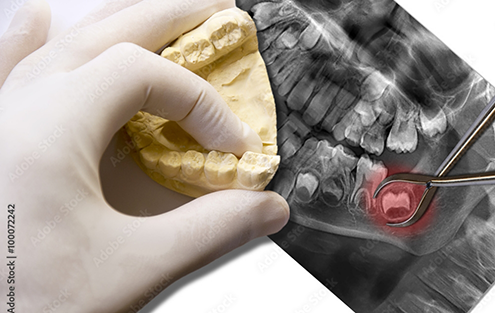
Around the age of 12, children should receive a wisdom tooth evaluation and consultation. At this age, the wisdom teeth are typically still developing below the gum line. By examining these teeth in this early stage, we can help preteens and parents understand whether or not a wisdom tooth extraction will be necessary. Some of the reasons we may recommend a wisdom tooth extraction include:
- A tooth is developing out of alignment with the existing smile line, which could cause the surrounding teeth to shift out of position
- A tooth is developing at an angle that may prevent it from erupting
- A tooth is causing severe pain or dental sensitivity
- A tooth is pressing against the surrounding teeth leading to shifting or misalignment
Learn More About Wisdom Tooth Extractions
Types of Tooth Extraction
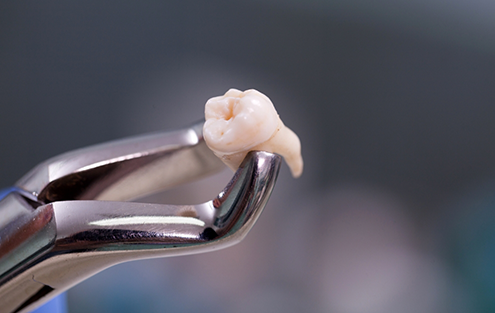
There are two main types of tooth extractions, simple and surgical. A simple extraction is ideal. When a tooth has fully erupted from the gumline, we start by numbing the area, holding the tooth with metallic tools, and gently shifting the tooth in its socket until it slips out on its own.
In most cases, wisdom teeth are at least partially surgically extracted. Surgical removal can be as simple as cutting away a small amount of soft tissue to fully reveal the tooth, or more complicated, involving breaking the tooth into smaller pieces for easy extraction.
Use of Bone Grafting for Socket Preservation
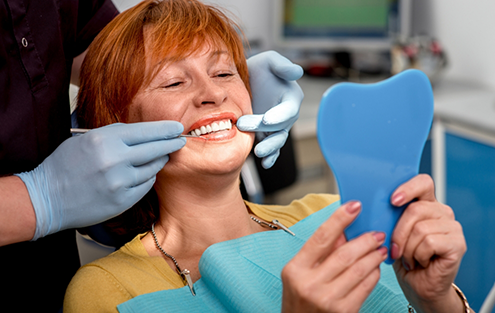
When a tooth is extracted, nearby teeth may shift to fill the socket, the surrounding bone and soft tissue diminish, and the shape of the jaw can change. To ensure the maintenance of the shape and structure of the jaw, placing a bone graft directly following an extraction is necessary. By performing a bone graft at the same time that a tooth is extracted, we ensure patients maintain the same jaw shape and flawless oral health.
Benefits of Combined Tooth Extraction & Grafting Procedures
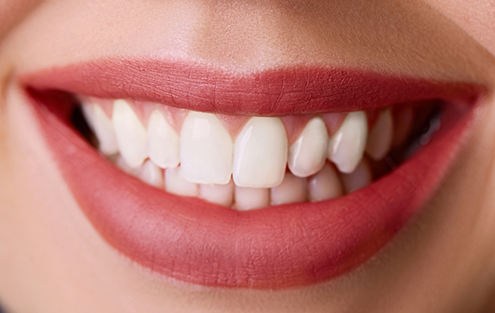
There are numerous benefits for patients when it comes to using a combined extraction and bone tissue grafting method, including:
- Decreased risk for oral health concerns like dry socket following an extraction
- Increased stability for surrounding healthy teeth, preventing shifting and dental drift
- Reduced bleeding and healing time following treatment
- Less risk for changes in facial shape that can occur following tooth loss
Understanding the Cost of Tooth Extractions and Bone Grafting
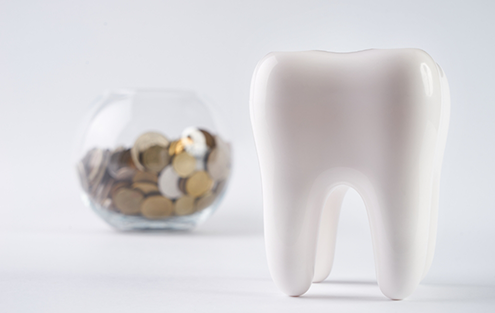
The cost of a combined tooth extraction and bone grafting procedure depends on a few factors. During your consultation, we can discuss specific numbers. In the vast majority of cases, getting these procedures performed at the same time is more affordable than getting a tooth removed and then having a bone graft later on. Plus, we have provisions available that may make it easier for you to fit your care into your budget, such as insurance, financing, and our in-house membership plan.
Factors That Can Affect Tooth Extraction and Bone Grafting Cost

Some factors that can influence the cost of your tooth extraction and bone graft include:
- Which tooth is getting removed? Some teeth are more challenging to remove than others. If you are undergoing a surgical extraction, you can expect the fees to be higher.
- How many teeth are getting removed? Logically, a single tooth extraction costs less than the extraction of multiple teeth.
- The extent of the bone graft. The amount of bone grafting material needed can have an impact on your overall bill.
- The overall complexity of your care. Our in-house specialists are capable of handling virtually any case that comes our way. However, complex cases often require more work and thereby incur a higher price.
- Next steps. Following a tooth extraction and bone graft procedure, we typically recommend that patients receive a dental implant to recomplete their smile and prevent future problems. An implant can add significantly to the overall price of your care.
Does Dental Insurance Cover Tooth Extractions and Bone Grafts?

Dental insurance usually applies to tooth extractions. Many patients can use their benefits to reduce their out-of-pocket costs by 50-80%. It is also common for insurance to apply to bone grafting. Of course, you will have to check the details of your unique policy to find out how it might be able to help you. Our team can also assist you as you seek to figure out your benefits and use them in the most advantageous way possible.
Other Options for Making Tooth Extractions and Bone Grafting Affordable

Here are a few provisions you might be able to use to make your procedure more affordable:
- We accept CareCredit financing. After a quick application process, many patients discover they are eligible for a low-interest payment plan for their treatment.
- Our in-house membership plan. In exchange for a reasonable annual fee, you can enjoy discounted rates on virtually all of the services available at Blue Coast Dental Group.
Would you like to learn more about the cost of tooth extractions and bone grafting? Our team is ready to discuss all the details of the treatment with you, including financial information. Get in touch with us today to book your consultation. We look forward to serving you!
Tooth Extractions FAQs
Does Getting a Tooth Pulled Hurt?
If your dentist in Torrance recommended a tooth extraction, you may be tempted to put it off because you’re worried it’ll hurt. Rest assured – our dental team will numb your mouth completely before your extraction. It’s worth noting that you’ll likely experience mild soreness and discomfort following your procedure. However, you can easily manage it by following your aftercare instructions. If your pain worsens or you begin to experience symptoms of an infection (i.e., fever and swelling), contact our office right away.
Is There an Alternative to Tooth Extraction?
It depends! If you’re having a tooth pulled because of extensive decay, root canal treatment may be an alternative solution. Meanwhile, patients with periodontal disease could opt for root scaling and planing instead. Of course, it’s important to remember that our dentist in Torrance will only recommend an extraction if it’s the best option for your smile. For some patients, it’s the only way to get a strong, healthy, and pain-free grin once again.
What’s Recovery for Tooth Extractions Like?
After your procedure, we’ll provide you with a detailed list of aftercare instructions to help you make a speedy, smooth-sailing recovery. One of the most crucial things you must do while healing is care for the blood clot that forms on the surgical site. If you fail to do so, it can lead to a painful complication known as a dry socket. You must also keep your mouth clean during your recovery to help minimize the risk of infection and promote faster healing. Most patients can begin brushing, flossing, and rinsing within three days of their procedure, which is around the time you should start feeling better.
Can I Smoke After Getting a Tooth Extracted?
No! Smoking cigars, cigarettes, and even e-cigarettes can delay healing. It’s strongly recommended that you avoid smoking for at least five days following your extraction. Of course, quitting this poor habit completely is the ideal option. If you’re having difficulty kicking this habit to the curb, don’t hesitate to get in touch with our team. We’ll provide you with the support, resources, and guidance you need to make the feat as easy as can be.
What Are My Options for Replacing a Missing Tooth?
The best way to replace your extracted teeth depends on how many teeth were removed and where they were positioned in your mouth. At Blue Coast Dental Group, we offer options such as:
- A dental bridge: This appliance consists of one or several artificial teeth supported between two dental crowns placed on healthy teeth or dental implants placed in the gum tissue at either end of the gap. Bridges can be excellent options for replacing one or several missing teeth in a row.
- Dentures: These devices can replace several, many, or all of the teeth on an arch with beautifully lifelike and remarkably comfortable restorations. Modern dentures are incredibly natural-looking and easier to care for than ever before.
- Dental implants: Considered the ideal way to replace lost teeth, these titanium posts are surgically placed in and naturally fused with the jawbone so they can provide the most stable hold possible while exerting maximum chewing power. These appliances may last for a lifetime with proper care and can support lifelike restorations like dentures, dental bridges, or single dental crowns.
During your consultation, our dentist will recommend the best option for you based on your needs and preferences.
Can I Leave the Space Empty After a Tooth Extraction?
Some patients who have teeth in the backs of their mouths extracted may be tempted to think they won’t have to replace them since they aren’t easy to see, but this can lead to significant oral and overall health issues. Tooth loss can affect your chewing and speaking ability considerably, and it will also deprive your jawbone of the exercise it needs to remain healthy and strong. Not being able to chew your food properly can make you much more vulnerable to malnutrition and indigestion, and a missing tooth toward the front of the mouth may lead to speech difficulties such as a lisp. We recommend replacing extracted teeth as soon as possible to preserve your smile and your health.
How Long After a Tooth Extraction Can I Get Dentures?
We usually recommend waiting six to eight weeks after tooth extraction before getting dentures. This gives your gums the time they need to heal properly so there isn’t any swelling when we take the bite impressions that your dentures will be modelled upon. Using these impressions, a skilled technician will craft your dentures based on precise measurements to ensure that your appliance fits well and your replacement teeth bite together properly. After your dentures are completed, you’ll come into our office in Torrance so you can try them on and allow our dentist to make any final adjustments. We’ll also give you detailed instructions for maintaining your appliance so it can stay functional and beautiful for the longest possible time.
